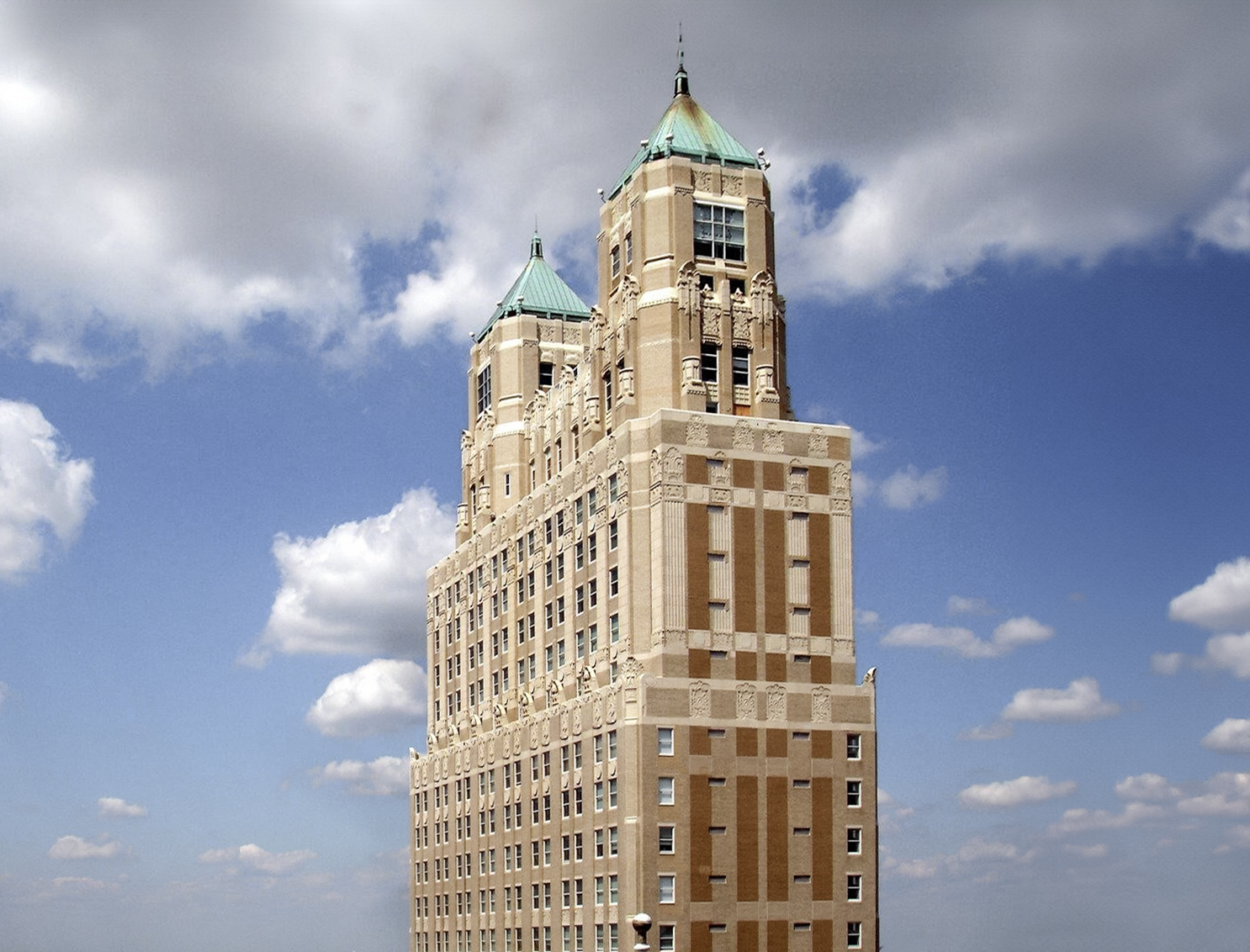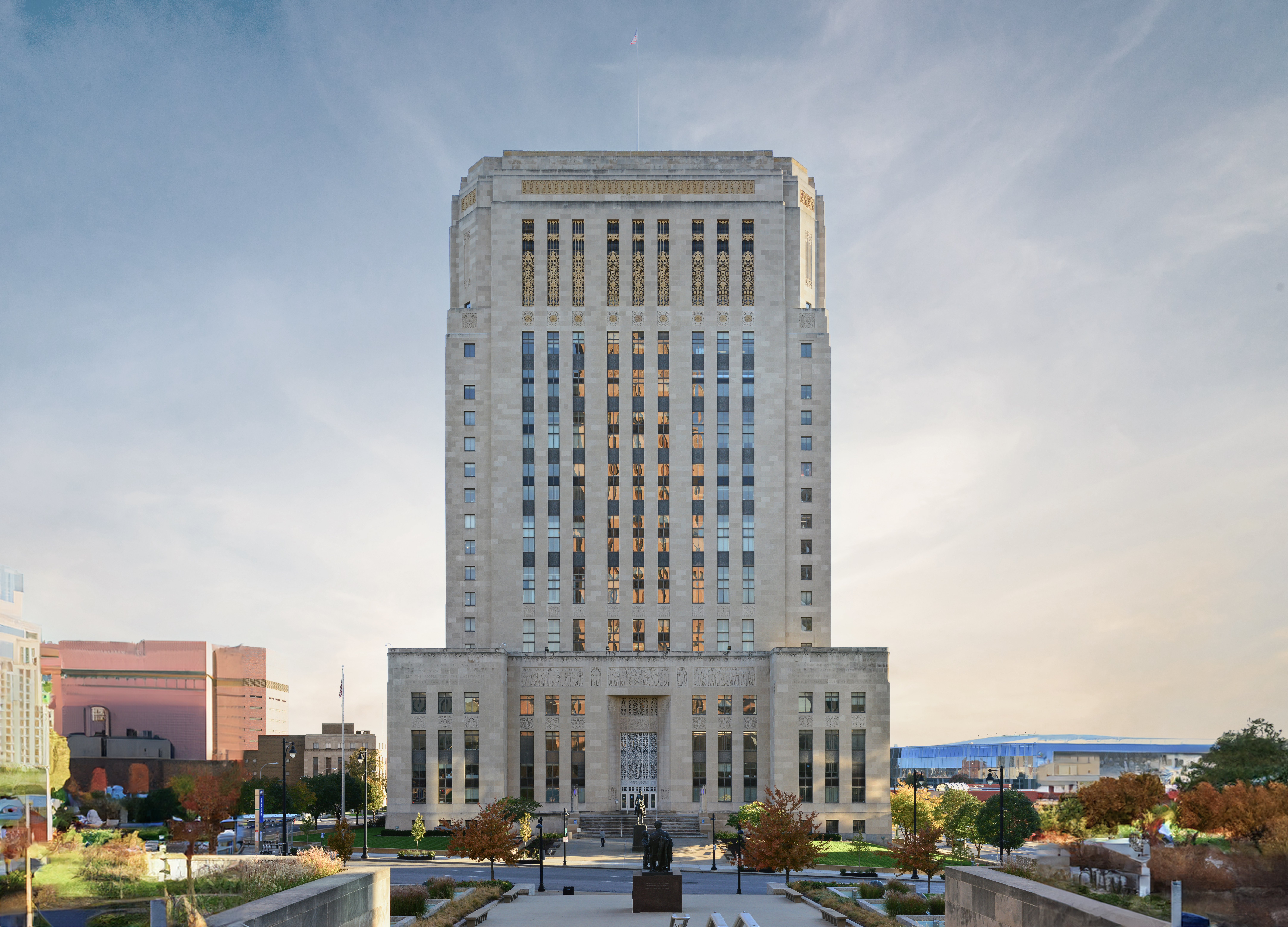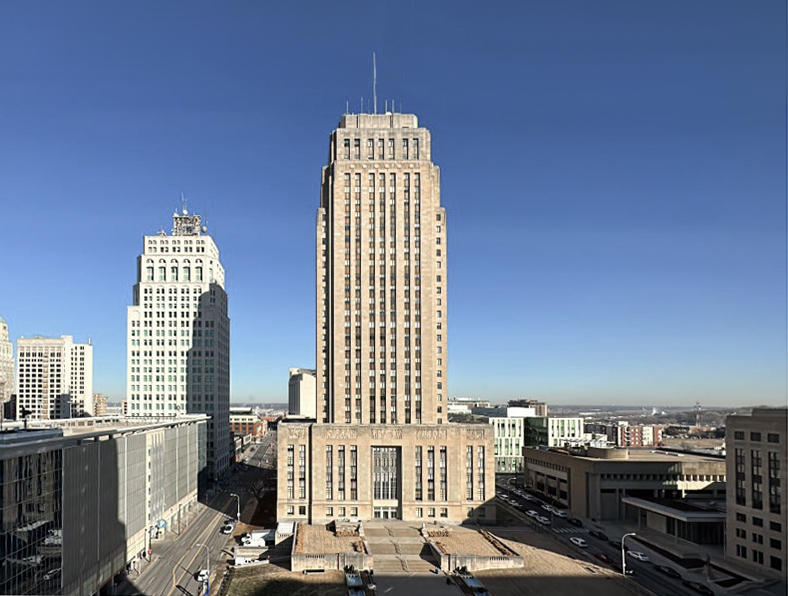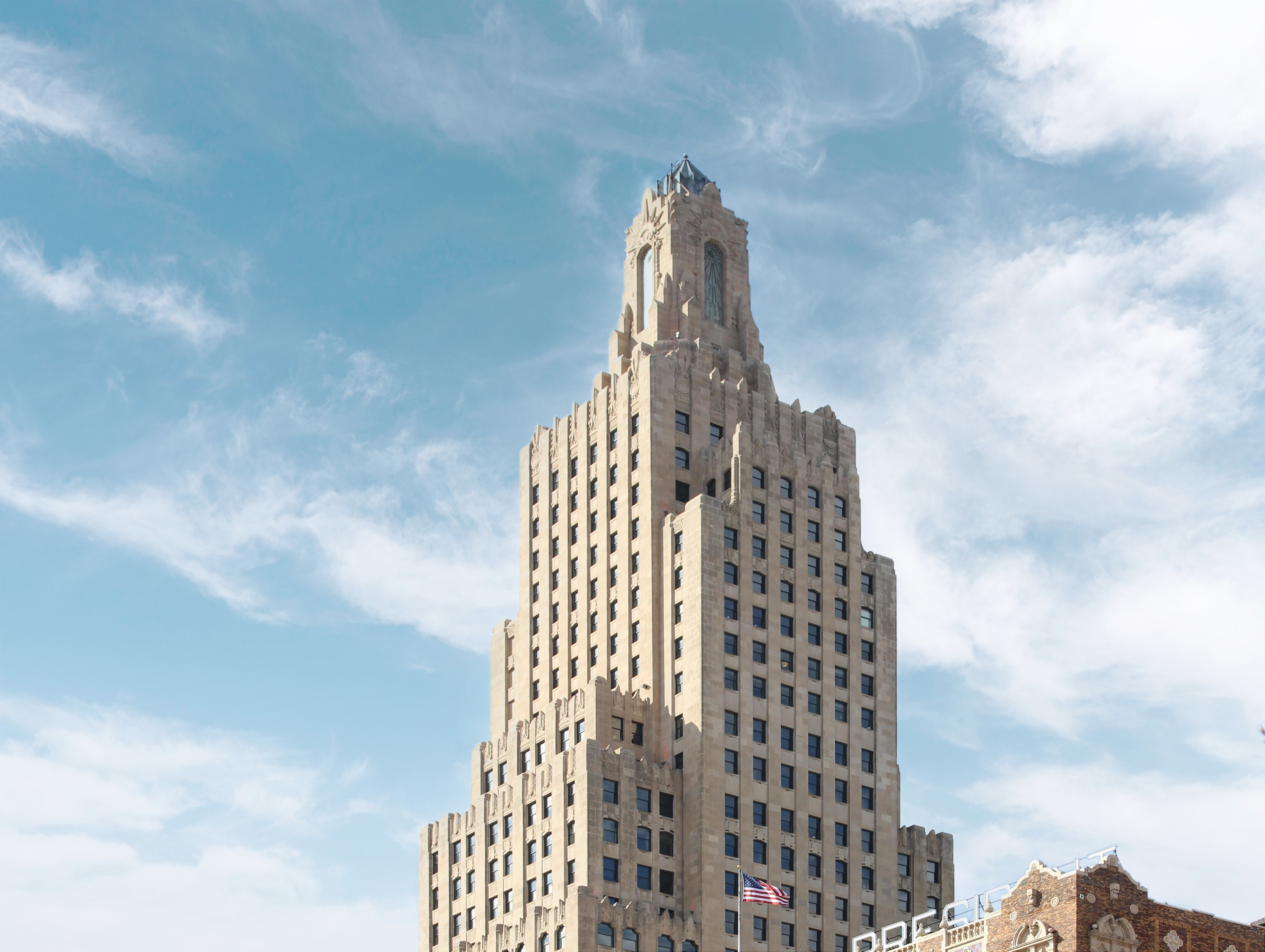The 909 Walnut Apartments is an Art-deco skyscraper designed by Hoit, Price & Barnes, and built between 1930 and 1931, for a reported $2.85 million dollars, in Kansas City, MO.
909 Walnut Apartments is not the only name you might know this building by though. It is common for companies to want to attach their names to iconic buildings when they move in, or for the general public to come up with nicknames, and this one is no exception. The building has changed names several times over the years, and is also known as:
- Fidelity National Bank & Trust Building between 1931 and 1933.
- Federal Office Building between 1946 and 1995.
- 911 Walnut between 1995 and 2001.
- 909 Walnut from 2001 until this day.
Its precise street address is 909 Walnut, Kansas City, MO. You can also find it on the map here.
The 909 Walnut Apartments is a structure of significant importance both for the city of Kansas City and the United States as a nation. The building embodies the distinctive characteristic features of the time in which it was built and the Art Deco style. Because of that, the 909 Walnut Apartments was officially included in the National Register of Historic Places on July 4th 1997.
The building underwent a major restoration between 2000 and 2005.





